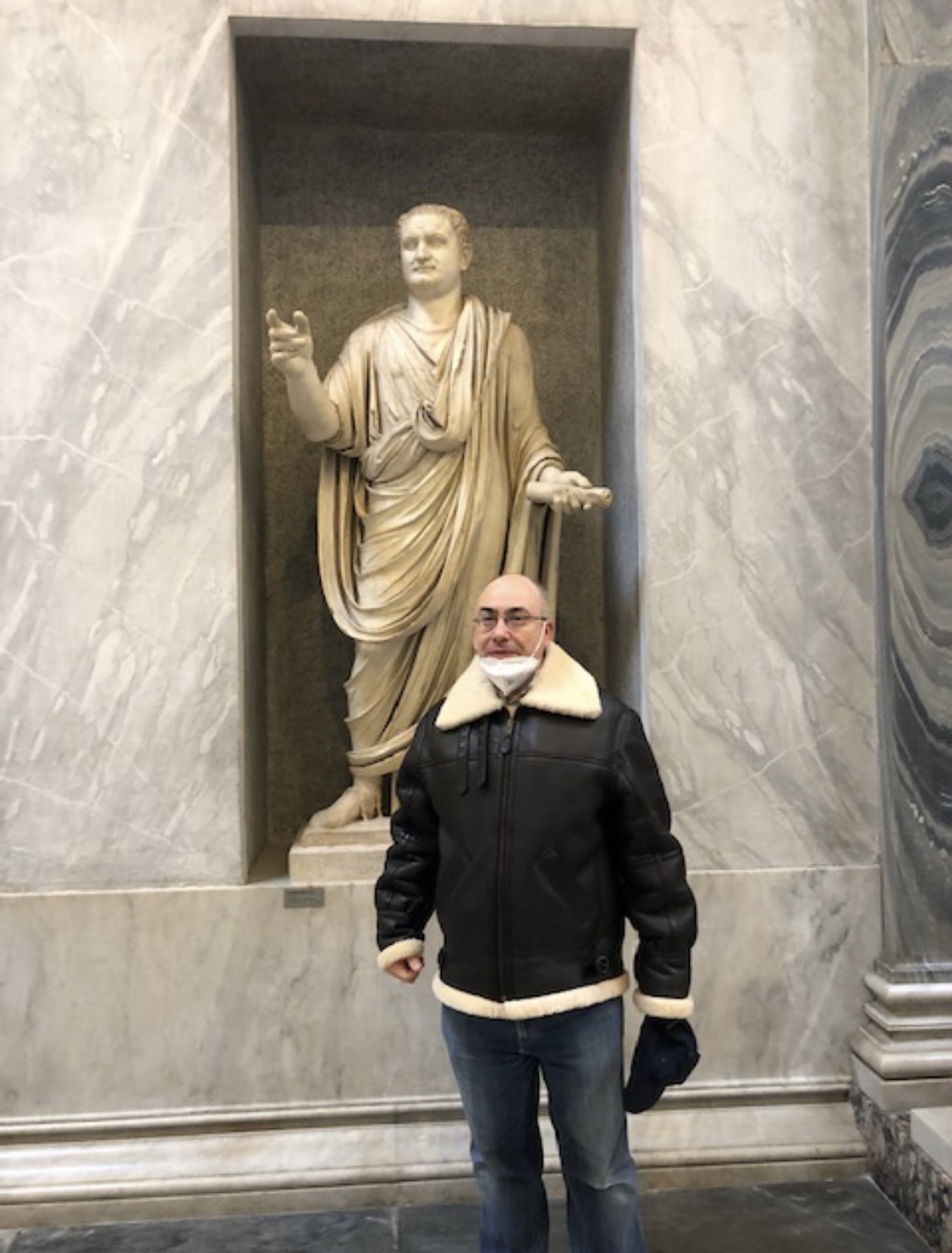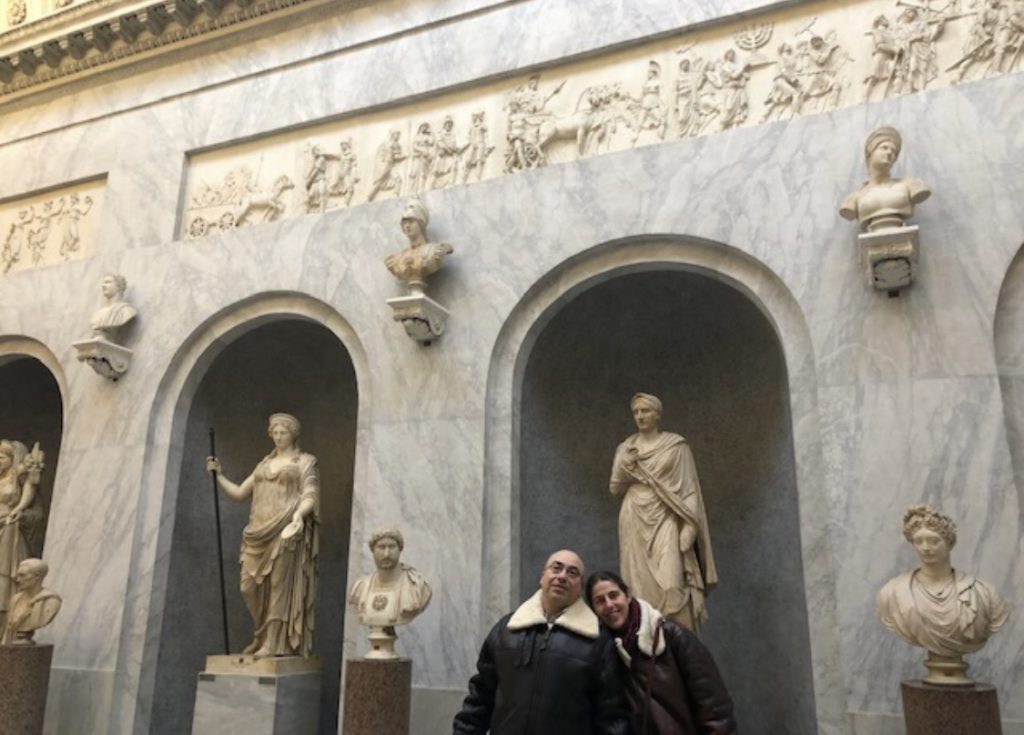Gladiatorial games were not uncommon to the Jews before the destruction of the Temple in 70 CE, says a noted historian in Jews and Judaism Professor Samuele Rocca.

King Herod (Reign 37-4 BCE) introduced in Jerusalem, and Caesarea Maritima Quinquennial Games in honor of Emperor Augustus, to be held every five years (On the Jerusalem Games see Josephus, Antiquities XV, 268, On Caesarea Maritima’s Games, see Josephus, Antiquities XVI, 138 and War I, 415).
Caesarea Maritima was a port city built by Herod the Great in 22 BCE on the site of the Hellenistic period anchorage known as Strato’s Tower. Herod named the city and its harbor (Sebastos) in honor of Augustus Caesar, his patron).
Josephus Flavius, born Yosef ben Matityahu (Jerusalem, 37 approx.- Rome, 100 approx.), is very clear on the type of games hosted in the Herodian theaters and hippodromes, says Rocca. Thus, Josephus states that at Jerusalem, King Herod “did he celebrate these games every five years, in the most solemn and splendid manner. He also made proclamation to the neighboring countries, and called men together out of every nation. The wrestlers also, and the rest of those that strove for the prizes in such games, were invited out of every land, both by the hopes of the rewards there to be bestowed, and by the glory of victory to be there gained. So the principal persons that were the most eminent in these sorts of exercises were gotten together, for there were very great rewards for victory proposed, not only to those that performed their exercises naked, but to those that played the musicians also, and were called Thymelici; and he spared no pains to induce all persons, the most famous for such exercises, to come to this contest for victory. He also proposed no small rewards to those who ran for the prizes in chariot races, when they were drawn by two, or three, or four pair of horses. He also imitated everything, though never so costly or magnificent, in other nations, out of an ambition that he might give most public demonstration of his grandeur.” On the other hand, on the occasion of the inauguration of Caesarea Maritima in 13 B.C.E., according to Josephus, “there was accordingly a great festival and most sumptuous preparations made presently, in order to its dedication; for he had appointed a contention in music, and games to be performed naked. He had also gotten ready a great number of those that fight single combats, and of beasts for the like purpose; horse races also, and the most chargeable of such sports and shows as used to be exhibited at Rome, and in other places. He consecrated this combat to Caesar, and ordered it to be celebrated every fifth year.”
These gladiatorial games were to be celebrated in the new leisure buildings, erected in Caesarea Martima, and possibly at Sebaste. These were not amphitheaters, like the Flavian amphitheater in Rome, explains Professor Rocca. Indeed, gladiator games could also be held in both the theater and hippodromes. The gladiatorial games were held in the Roman Forum in the Late Republic and in the theaters in the Early Imperial Age until the construction of Colosseum (the Flavian amphitheater), although the earliest amphitheater in Italy, that of Pompeii, was erected around 70 BCE.
Herod’s son, Herodes Antipas (Regin 4 BCE- 39 CE) continued his fathers legacy and built theaters in Sepphoris and Tiberias. Although, these buildings were completely foreign to Jewish tradition, most Jews objected mainly to the possible presence of pagan cultic images. More than that, it seems that also gladiatorial games were shunned. It is clear from Josephus’s description of the Quinquennial Games hold at Jerusalem and at Caesarea Maritima, that only in the latter, in Caesarea Maritima, gladiatorial duels and hunts against wild beasts, or venationes were hold, says Rocca.
The Jewish public was not enthusiastic about gladiatorial games, which were considered immoral. Thus, the priestly aristocracy, including the Pharisee Masters condemned gladiatorial entertainment. The reaction of the Jewish public was not unique as many Greek and Roman intellectuals, such as Seneca, condemned as well gladiatorial contexts.
And yet it was very common at Rome, and by now, we know as well that these were popular in the Eastern part of the Empire, Greek speaking, as the epigraphist Louis Robert demonstrated through the various gladiatorial inscriptions coming from Ephesus. Thus, it seems that Diaspora Jews were not as conscientious as their brethren living in Judea. In fact, a second century episode shows Smyrna Jews quite willing to participate as spectators in the death sentence, ad bestias, of the local Christian Bishop, Polycarpos (69-155 CE), and a century later, of another Bishop Pionios (approx. 250-300 CE). Rocca also says, the masses of the Diaspora Jews probably really enjoyed this entertainment in the same way as their Roman counterparts.
According to Rocca, it is possible that gladiators in Judea first during the rule of Herod the Great and then under the Roman governors, for example the well-known Pontius Pilatus, were professionals, not common criminals sentenced to death. They would fight in the arena but not to their deaths. Under Roman rule, common criminals in Judea were sentenced to the cross, not to the arena. Nowhere does Josephus write that a Jew was sentenced to death in the arena by the Roman governor explains Rocca. In addition, Resh Lakish, a Sage of the middle of the Third Century, an extremely important person in the Jerusalem Talmud together with his father-in-law, Rabbi Jochanan, started his career as a gladiator in the local theaters of Galilee.
In his essay “A Jewish Gladiator in Pompeii,” Rocca focuses on a bronze gladiatorial helmet that depicts a seven-branched palm tree.
The main characteristic on the helmet’s front is a seven-branched palmetto relief. The helmet, produced before the eruption of Vesuvius 79 CE, depicts a very similar palm found on the Judaea Capta coins of Vespasianus and Titus, as well as on the coins of the tetrarch Herod Antipas, of those of the prefects and procurators, and on the coins minted by the Jews during the war with Rome from 66 to 74 CE. This particular iconographic motive, the palm tree, was the main national symbol of the Jews in the eyes of the Romans until the Bar Kokhba War (132-135 CE). Besides the palm-tree with seven branches could be perceived as a depiction of the Menorah, the seven-branched candelabrum used in the Temple in Jerusalem. This similarity is quite important, as, according to Margaret H. Williams, the menorah had an apotropaic meaning. Thus, the menorah could be interpreted as a symbolic depiction of God, which emphasized the presence of a vigilant and protective Divinity. For a gladiator that all time faced death on the arena, it is likely that the seven branched palm tree – Menorah could have assumed an apotropaic meaning, to ward off the ever-present death. No matter the meaning of the seven-branched palm tree, it is clear that in the eyes of the public, it identified the gladiator as a Jew.
Gladiatorial helmets are mute witnesses of the gladiatorial games held in the city amphitheater that so much exited the Pompeian public.
In the eyes of both the Romans and the Jews, the palm-tree was a symbol of Judea in the First Century CE, says Rocca.
Last month I had the opportunity to meet with Professor Rocca with his lovely wife at the Vatican Museums. I wanted to know more about Jewish gladiators before and after the destruction of the Temple in 70 CE. Standing in front of the marble sculptures of Emperor Augustus, Domitian and Titus in the New Wing of the Vatican Museums we discuss the Jewish gladiator in Pompeii.
Josephus highlights that many prisoners after the onslaught of 66-70 CE, the Jewish War, were sentenced to fight as gladiators. Titus had no problem in sentencing Jewish prisoners to fight as gladiators at Caesarea Philippi (Caesarea Philippi a city in ancient Palestine, on the site of the present-day village of Baniyas in the Golan Heights. It was the site of a Hellenistic shrine to the god Pan and then of a temple built towards the end of the 1st century BCE by Herod the Great and named in honour of the Roman emperor Augustus Caesar, reigning from 27 BCE-14 CE). According to Josephus “Titus Caesar exhibited all sorts of shows there. And here a great number of the captives were destroyed, some being thrown to wild beasts, and others in multitudes forced to kill one another, as if they were their enemies.”
Rocca goes on to explain, that unfortunately, the Jewish captives continued to fight as gladiators at Caesarea Maritima and Berytos (an ancient city in modern Lebanon; modern Beirut). “While Titus was at Caesarea he solemnized the birthday of his brother Domitian after a splendid manner, and inflicted a great deal of punishment intended for the Jews in honor of him. For the number of those that were now killed in fighting with the beasts, and were burned, and fought with one another, exceeded two thousand five hundred. Yet did all this seem to the Roman, when they were thus destroying ten thousand several ways, to be punishment beneath their deserts. After this Caesar came to Berytos, which is a city of Phoenicia, and a Roman Colony, and stayed there before a longer time and exhibited a still more pompous solemnity about his father’s birthday, both in the magnificence of the shows, and in the other vast expenses he was at in his devices thereto belonging; so that a great number of the captives were here destroyed after the same manner as before.”
Thus, it seems that the owner of this helmet found at Pompeii was a Jew, who fought as gladiator in the amphitheater of Pompeii. He had to be good at his job, as he possessed such an impressive helmet, and he was probably also well known by the masses coming to the gladiatorial contexts. This helmet with a peculiar decoration would have made him immediately identifiable.
Some of the Jews living in Pompeii, many of them slaves that arrived in the wake of the Jewish Revolt, were members of the Pompeii underworld. A certain Ionas is recorded in an obscene graffito. A certain Iesus (Joshua in Hebrew) recorded on a graffito a joke of the gladiator (murmyllo) Lucius Asicius, comparing him to a small fish, instead of a victor. Did Iesus stood by our Jewish gladiator, and here he finds the occasion to minimize the achievements of another gladiator? We shall never know. Nor we shall ever know the destiny of our Jewish gladiator if he survived the eruption of the Vesuvius in 79 C.E., which completely obliterated Pompeii from history.













